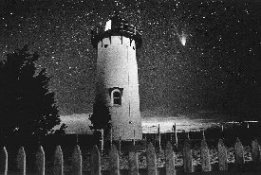Here's a graph comparing the necessary exposure for Acros, TMX, and Delta 3200 at the same light levels. Acros and TMX are assigned ISO 100 and Delta 3200 is assigned ISO 1000. The Acros line is a best fit curve for Kit Courter's data at the Lunar Light Photography web site. The TMX curve is a best fit for Howard Bond's data in his Photo Techniques article on reciprocity failure, referenced many other places on APUG. The Delta 3200 curve is from Michael Covington's 2000 test of Delta 3200 that resulted in a Schwarzschild exponent of 0.65. covingtoninnovations.com
The x-axis is metered exposure in seconds for ISO 100. The y-axis is the exposure needed to compensate for reciprocity failure. The curve for Delta 3200 is shifted to account for it's higher ISO, so the x-axis values are not correct for the Delta 3200 curve, but the relative positions of the curves on the graph are correct for reciprocity adjusted exposure under identical lighting.
It's difficult for lower reciprocity failure in the 100 ISO films to overcome the initial speed advantage of Delta 3200, which is what places the Delta 3200 line so much lower at the y-axis. TMX grows closer to Delta 3200 at the 80-160 second measured time for 100 ISO, but it will be a long time reaching the shorter exposure time needed for Delta 3200 with it's higher initial ISO, if indeed it every gets there. Acros is the clear champ in overcoming reciprocity failure, but it still doesn't catch up with the ISO 1000 Delta 3200 until Acros requires a metered 930 second (15.5 minute) exposure and Delta 3200 needs a metered 93 second exposure, at which point both films need about 1085 seconds of exposure to overcome their respective reciprocity failure.
A lot of people make the statement that slower films can 'quickly' overcome the speed of faster films with poorer reciprocity characteristics, but they often don't take into account the relative metered exposures needed under identical working conditions, and this overtaking of higher speed films by slower films happens less often and less quickly than they imagine.
Given Covington's tested Schwarzschild exponent of 0.65, you can calculate reciprocity adjusted times from metered times as follows:
adjusted time = (metered time + 1)^(1/0.65) - 1
Plug that into a spreadsheet and print out a chart that will give you a good starting point for Delta 3200 reciprocity failure. There are batch to batch variations in film, and you may need to adjust the Schwarzschild factor up or down a little to fit your usage.
BTW, you should always assume that numbers like these are approximate, as there is always a lot of variability and experimental error where reciprocity failure is involved. Test for yourself. You could also use the Schwarzschild numbers to generate a Gainer factor for the equation he uses for reciprocity failure, as shown in the article he references. You'll likely end up within 1/3 of a stop (or closer) of the same exposure if you compare the two methods with the appropriate factor/exponent.
Lee






